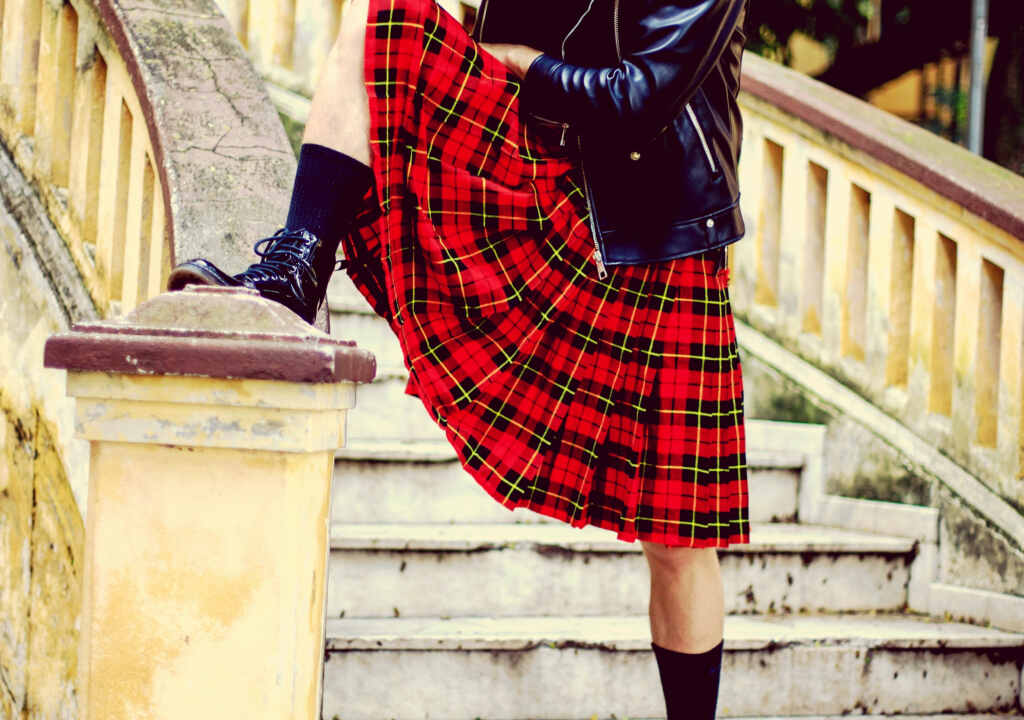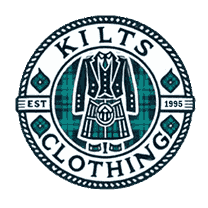How to Choose the Perfect Kilt for Your Body Type

Choosing the right traditional kilt for your body type can make all the difference in how you look and feel. Whether dressing up for a special occasion or embracing your Scottish heritage, finding a kilt that fits well and flatters your shape is essential. This guide will help you navigate the process with ease.
Beyond aesthetics, the Comfort of wearing a kilt that complements your body type cannot be overstated. A well-fitted kilt allows for ease of movement, ensuring you feel confident whether walking down the aisle at a traditional irish wedding kilts or participating in a traditional Highland Games event. The right kilt will highlight your best features and provide the perfect balance of tradition and personal style.
With so many options available, from various tartan patterns to different fabric choices, it's easy to get overwhelmed. However, understanding your body type and specific features to look for in a kilt can simplify decision-making. Whether you're slim, muscular, or have a rounder build, there's a kilt out there that's perfect for you, and this guide will show you exactly how to find it.
Understanding Body Types
Before diving into traditional kilt styles, it's crucial to understand your body type. Here are the three main categories:
Ectomorph (Slim)
- Characteristics: Ectomorphs typically have a narrow frame with smaller shoulders and hips. Their build is generally lean, often with longer limbs and minimal body fat. This body type can sometimes appear less muscular and may lack natural curves.
- Goal: For those with an ectomorphic body type, the main objective is to add volume and create the appearance of broader shoulders and hips. It can be achieved by selecting kilts with heavier fabrics and incorporating pleats that add bulk to the lower body. Additionally, choosing tartans with larger patterns can visually widen the frame, giving the impression of a more balanced and proportional physique.
Mesomorph (Muscular/Athletic)
- Characteristics: Mesomorphs are naturally muscular and often have a well-defined physique, broader shoulders, and narrower waist. A strong, athletic build, with an even distribution of muscle mass and a natural V-shape, typically characterize this body type. Mesomorphs tend to gain muscle easily and have a higher metabolism, which helps maintain their muscular appearance.
- Goal: Accentuate the natural V-shape by choosing well-tailored kilts that emphasize the waist and shoulders. Opt for lighter fabrics and subtle patterns to highlight your muscular build without adding bulk. Avoid heavy or pleated kilts that overwhelm your frame, ensuring a sleek, streamlined appearance.
Endomorph (Rounder/Softer)
- Characteristics: Softer, rounder body with a wider waist.
- The goal is to create a slimming effect by defining the waistline. Choose kilts with A-line cuts, darker colors, and vertical patterns to elongate the body and enhance proportions.
Kilt Length and Fit
Choosing the Right Length
- For Shorter Heights: Opt for a slightly shorter kilt, typically falling just above the knee, to create the illusion of longer legs. A kilt that is too long can make you appear shorter by overwhelming your frame. To enhance this effect, pairing the kilt with slightly elevated shoes can further elongate your legs and add to the overall proportion of your look.
- For Taller Heights: A standard or slightly longer kilt that reaches just below the knee can help balance your height. This length ensures the kilt does not look too short on your frame, maintaining a harmonious balance between your upper and lower body. If you're particularly tall, consider avoiding excessively long kilts that may disrupt the visual proportion. Instead, choose a length that complements your stature while allowing for comfortable movement.
Fit Around the Waist and Hips
- Comfort and Placement: Ensure the kilt sits comfortably around your natural waist, typically just above the hips, without being too tight or loose. A well-fitted kilt should stay in place without needing constant adjustment, allowing you to move freely and confidently. The correct placement of the kilt at your waist will not only enhance your Comfort but also contribute to the overall appearance of the garment, making it look more tailored and refined.
- Accurate Measurements: To avoid an uncomfortable or unflattering fit, measure your waist accurately. Use a flexible tape measure and measure at the point where you plan to wear the kilt, usually about an inch above the navel. When measuring, ensure the tape is snug but not tight, as this will give you the most accurate size. Remember that kilts are typically worn higher on the waist than trousers, so precise measurements are key to perfect fit.
- Hip Considerations: If you have a fuller hip area, ensure the kilt has enough room to drape smoothly over the hips without pulling or bunching. Consider choosing a kilt with pleats that can accommodate the shape of your hips, allowing the fabric to fall naturally and create a flattering silhouette. For those with narrower hips, a kilt that fits closely around the waist and hips can help define these areas, enhancing your overall shape.
Kilts for Different Body Types
Here's a quick guide to help you choose the best kilt style based on your body type:
| Body Type | Recommended Kilt Features | Tips |
|---|---|---|
| Ectomorph (Slim) | Heavy fabrics, pleats for volume, patterns that add width | Look for tartans with larger patterns to create the illusion of bulk. |
| Mesomorph (Athletic) | Tailored kilts, lighter fabrics, minimal pleats | Stick to solid colors or subtle patterns to highlight your natural physique. |
| Endomorph (Rounder) | A-line kilts, darker colors, vertical patterns | Avoid kilts with too much volume; opt for vertical stripes to elongate the body. |
Choosing the Right Fabric and Pattern
Selecting the right fabric and pattern for your kilt is as important as finding the perfect fit. The fabric determines the men's traditional kilt Comfort, durability, and suitability for different occasions. At the same time, the pattern plays a crucial role in expressing your style and heritage. Here's how to make the best choices based on your needs and body type
Fabrics
- Wool: Traditional and sturdy, ideal for formal occasions.
- Cotton/Blends: Lightweight and breathable, perfect for casual wear.
- Polyviscose: Durable, easy to care for, and great for everyday use.
Patterns
- Large Tartans: Suitable for slim body types to add volume.
- Subtle Patterns: Ideal for athletic builds to avoid overpowering the physique.
- Vertical Stripes: Best for rounder body types to create a slimming effect.
Accessorizing Your Kilt for Your Body Type
Accessorizing your kilt properly can enhance your overall look, adding style and functionality to your outfit. The right accessories complement your kilt and help balance your body proportions, making you look your best. Here's how to choose the right accessories based on your body type
Belts and Sporrans
- Belts: Use a wide belt to define your waist, especially if you have a rounder build.
- Sporrans: Choose a proportionate sporran to your size; larger sporran for taller builds, smaller for shorter heights.
Footwear
- For Shorter Heights: Opt for shoes with a slight heel to add height.
- For Taller Heights: Flat shoes or traditional ghillie brogues work best.
Jackets and Vests
- Slim Builds: A fitted jacket can add structure.
- Athletic Builds: Vests can enhance the V-shape of your body.
- Rounder Builds: Longer jackets that hit below the waist can help elongate your frame.
Common Mistakes to Avoid
- Wearing the Wrong Length: A kilt that's too long or short can throw off your proportions.
- Ignoring the Fit Around the Waist: A poorly fitted waist can be uncomfortable and unflattering.
- Overlooking Fabric and Pattern Choices: The wrong fabric or pattern can make a kilt look awkward rather than stylish.
Conclusion
Finding the traditional kilt for your body type doesn't have to be difficult. By understanding your shape and focusing on fit, fabric, and style, you can choose a kilt that looks and feels great. A well-chosen kilt enhances your appearance and boosts your confidence, making you stand out at any event. Consider the impact of fabric and pattern on Comfort and style, and don't hesitate to seek expert advice for the perfect fit. The right kilt is a timeless investment in tradition and personal style, ready to be worn with pride for years.
FAQ's
Absolutely! Just be mindful of the length and fit to ensure it complements your height.
Most kilts can be adjusted slightly, but significant weight changes might require alterations.
Large patterns can add volume to slim builds, while subtle patterns or vertical stripes can slim down rounder figures.
Select a kilt based on the occasion and body type—wool tartans for formal events and lighter casualwear fabrics. Ensure the right length and fit.
Wool kilts weigh 13-16 oz per yard. Heavier weights (16 oz) are best for formal and cool climates; lighter weights (13 oz) are versatile and comfortable.
Measure your natural waist, hips, and length (waist to mid-knee). Ensure a snug waist fit and proper drape over the hips.
Ensure proper fit and length. Pair with appropriate accessories and wear with confidence.


